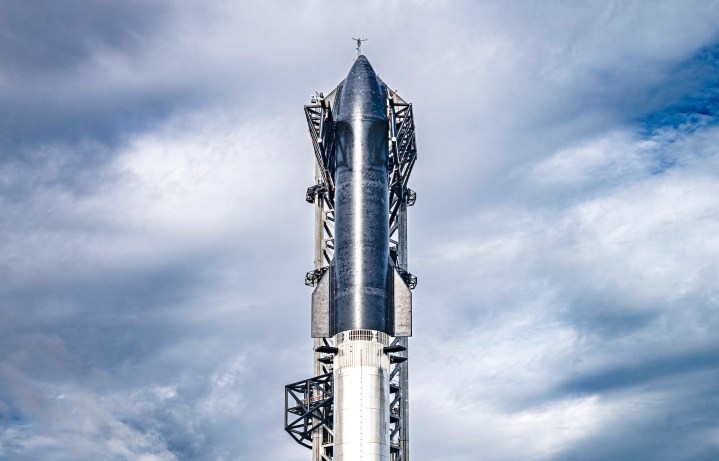
SpaceX has stacked the Starship rocket in preparation for its third test flight.
The Elon Musk-led company shared photos (below) of the stacked Starship — comprising the first-stage Super Heavy booster and the upper-stage Starship spacecraft — in a social media post on Tuesday.
Starship stacked for flight pic.twitter.com/ELpadHrlHz
— SpaceX (@SpaceX) March 12, 2024
Musk also posted a time-lapse showing the Starship being lifted onto the top of the main booster.
— Elon Musk (@elonmusk) March 11, 2024
SpaceX said recently that it could launch the 120-meter-tall (395 feet) Starship on its next test flight as early as March 14, but added that it was dependent on it first receiving flight permission from the Federal Aviation Administration (FAA). At the current time, it’s not clear if the FAA has given that permission.
The rocket will lift off from SpaceX’s Starbase facility in Boca Chica, with its 33 Raptor engines producing a record 17 million pounds of thrust to power it skyward.
The Starship’s first two test flights saw the vehicle explode minutes after launch, though, unlike the first effort in April last year, the most recent launch in November saw the Starship successfully separate from the Super Heavy. This time the team wants to get the Starship to orbit.
It also has a number of other goals that it’s keen to achieve, including “the successful ascent burn of both stages, opening and closing Starship’s payload door, a propellant transfer demonstration during the upper stage’s coast phase, the first ever re-light of a Raptor engine while in space, and a controlled reentry of Starship.”
Once fully tested, the Starship is expected to be used to carry cargo and crew to the moon as part of NASA’s Artemis program. It could also be used for space tourism trips around the moon and even carry the first humans to Mars.
But before then, SpaceX needs to make some solid progress with the Starship’s development. With that in mind, there’s a lot hanging on the Starship’s third test flight.
Editors' Recommendations
- SpaceX’s Falcon 9 rocket just completed a milestone mission
- SpaceX all set for a record-breaking rocket launch on Friday
- SpaceX shares stunning night shot of its Super Heavy booster
- SpaceX already has a date in mind for next Starship launch
- Take a high-speed ride on SpaceX’s emergency escape chute


